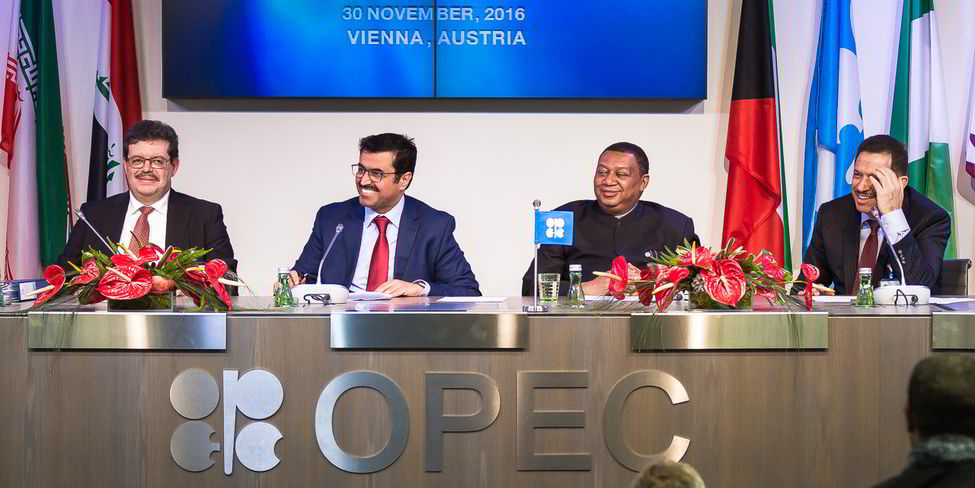Exports from Opec members hit two-year highs at the end of last year, according to cargo tracking firm ClipperData. Producing nations ramped up cargo volumes ahead of plans to cut global crude output this year.
Total Opec exports last year rose 7.5% to 24.2 million barrels per day. Director of research Matt Smith says the gain stemmed from Opec accelerating its exports from September through December just ahead of this year’s cuts.
Total Opec exports for December hit 25.5 million barrels per day, with November volumes hitting 26 million barrels per day. Smith says Opec went "pedal to the metal" with exports from Saudi Arabia, Iran, UAE, Kuwait and Libya all reaching highs in the fourth quarter.
Likewise, non-Opec producers such as Russia saw higher exports in 2016 than in 2015.
“Every month last year was higher than the month in the year before,” Smith said.
But those highs will not last as Opec and non-Opec members promise to cut production. ClipperData says export volumes could be cut as much as 1.1 million barrels per day if the cuts are fully implemented.
But ClipperData chief executive Abudi Zein says it’s more likely that producers will “muddle through the cuts,” with exports only being some 700,000 barrels per day lower this year.
“That is the most likely scenario for us,” Zein said.
The ramp up in exports fuelled a fourth quarter rally in VLCC rates, which averaged $33,958 per day according to the Baltic’s assessment, up from a third quarter average of $12,358 per day.
But the level of potential cuts remains an overhang on the tanker market this year. Forward freight assessments for the second quarter are showing VLCC rates from the Middle East to Japan voyage at around $19,600 per day.
“You should really start seeing those cuts in the export numbers,” Smith said.



